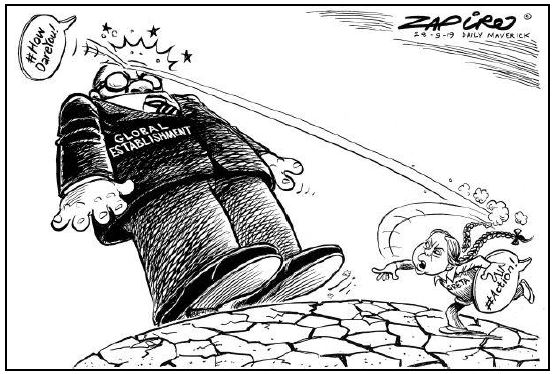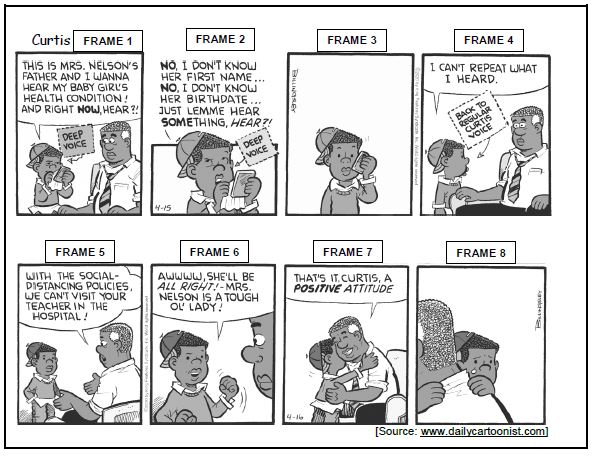ENGLISH HOME LANGUAGE PAPER 1 GRADE 12 QUESTIONS - NSC PAST PAPERS AND MEMOS NOVEMBER 2021
Share via Whatsapp Join our WhatsApp Group Join our Telegram GroupINSTRUCTIONS AND INFORMATION
- This question paper consists of THREE sections:
SECTION A: Comprehension (30)
SECTION B: Summary (10)
SECTION C: Language in context (30) - Read ALL the instructions carefully.
- Answer ALL the questions.
- Start EACH section on a NEW page.
- Rule off after each section.
- Number the answers correctly according to the numbering system used in this question paper.
- Leave a line after each answer.
- Pay special attention to spelling and sentence construction.
- Suggested time allocation:
SECTION A: 50 minutes
SECTION B: 30 minutes
SECTION C: 40 minutes - Write neatly and legibly.
SECTION A: COMPREHENSION
QUESTION 1: READING FOR MEANING AND UNDERSTANDING
Read TEXTS A AND B below and answer the questions set.
TEXT A
THE OLD HAVE MADE A MESS OF THE WORLD.
[Adapted from The Guardian Weekly, 20 December 2019] |
GLOSSARY:
1Apocalypse: destruction of the world
2napalm: chemical substance used in warfare
3altruistic: helping others without self-gain
AND
TEXT B
[Source: dailymaverick.co.za]
QUESTIONS: TEXT A
1.1 What message does the writer convey in the first sentence, 'World leaders are … about other things'? (2)
1.2 What does 'trading playground insults' (line 5) reveal about the writer's attitude toward powerful politicians? (2)
1.3 Refer to paragraph 2.
Discuss the importance of mentioning the participants in various protests. (2)
1.4 Refer to paragraphs 3 and 4.
What are the implications of referring to humankind as a 'child' (line 17) and an adolescent (lines 27–30)? (3)
1.5 How does the writer use diction in paragraph 5 to convey his message? (3)
1.6 Comment on the writer's tone in paragraph 6, with close reference to the text. (3)
1.7 Evaluate the claims made by the writer in paragraph 8 in relation to the title of the article. (3)
1.8 Refer to lines 62–63: 'Juvenility and maturity … much you care.'
In your opinion, is this final sentence an effective conclusion to the writer's argument? Justify your response. (3)
QUESTIONS: TEXT B
1.9 Why has Greta (the girl) arrived with the two hashtag speech bubbles?(2)
1.10 Comment on the composition of the characters in the cartoon. (3)
QUESTION: TEXTS A AND B
1.11 To what extent does TEXT B reinforce the ideas expressed in paragraph 7 of TEXT A? Motivate your response. (4)
TOTAL SECTION A: 30
SECTION B: SUMMARY
QUESTION 2: SUMMARISING IN YOUR OWN WORDS
TEXT C discusses research done on the spread of fake news. Summarise, in your own words, the research undertaken on fake news.
NOTE:
- Your summary should include SEVEN points and NOT exceed 90 words.
- You must write a fluent paragraph.
- You are NOT required to include a title for the summary.
- Indicate your word count at the end of your summary.
TEXT C
WHY FAKE NEWS ON SOCIAL MEDIA TRAVELS FASTER THAN THE TRUTH False news is more novel than true news, and that may be why we share the false much faster and more widely. Prominent responses to false news include surprise, fear and disgust. True news tends to be met with sadness, joy, anticipation and trust. Humans are more likely than automated processes to be responsible for the spread of fake news. Researchers have studied what they term 'rumour cascades'. A cascade starts with a Twitter user making an assertion about a topic – with words, images or links – and continues in an unbroken chain of retweets. The researchers analysed cascades about news stories that six fact-checking organisations agreed were true or agreed were false. The study found that 'falsehood diffused significantly farther, faster, deeper and more broadly than truth in all categories of information'. Of all categories of fake news, false political news reached more people faster and went deeper into the networks than any other category of false information. The study compared the emotional content of replies to true and false rumours by using about 32 000 Twitter hashtags and a lexicon of about 140 000 English words that are associated with eight basic emotions: anger, fear, anticipation, trust, surprise, sadness, joy and disgust. Were automated processes, or 'bots', the main culprits in spreading falsity? No – the researchers found that humans were responsible for spreading false news. The researchers were more interested in identifying the factors that spread true and false news; they included interviews with users, surveys, lab experiments and neuro-imaging. The researchers' paper points to some obvious reasons to look deeper. False news can drive misallocation of resources during terror attacks and natural disasters, the misalignment of business investments, and misinformed elections. More openness by the social media giants and greater collaboration by them with suitably qualified partners in tackling the problem of fake news is essential. Traditional journalists are potential partners too. Since they find, check and disseminate news, they are well placed to assess the reliability of the reports that they receive. They also attract masses of comments online and generate discussions on social media platforms – they have a clear incentive to maintain trust in their own contributions to democratic life. |
TOTAL SECTION B: 10
SECTION C: LANGUAGE IN CONTEXT
QUESTION 3: ANALYSING ADVERTISING
Study the advertisement (TEXT D) below and answer the set questions.
TEXT D
[Source: slideshare.net]
The text in small font reads as follows:
Steps you can take to Spot it and Stop it
|
QUESTIONS: TEXT D
3.1 Account for the tone of the headline:
- Bullying:
- Spot it and Stop it! (2)
3.2 Discuss the suitability of the illustration in the text, in conveying the message of the advertiser. (3)
3.3 Comment on TWO techniques that the advertiser has used in the written text to influence the reader. (3)
3.4 Provide a suitable synonym for 'intimidating', in context. (1)
3.5 'Raise the issue on the staff feedback website'
Provide the part of speech for 'staff' in the sentence above. (1)
[10]
QUESTION 4: UNDERSTANDING OTHER ASPECTS OF THE MEDIA
Study the cartoons (TEXTS E AND F) below and answer the set questions.
TEXT E
[Source: www.dailycartoonist.com]
QUESTIONS: TEXT E
4.1 Account for the boy's intention in using the phrases, 'ALL RIGHT! and 'A TOUGH OL' LADY!' in FRAME 6. (2)
4.2 Critically discuss the effectiveness of FRAME 8 as a conclusion to the cartoon. (3)
4.3 Rewrite FRAME 5 in reported speech.
Begin with: Curtis's father said … (2)
TEXT F
[Source: www.wunc.org]
QUESTION: TEXT F
4.4 Comment on the cartoonist's use of satire in TEXT F. (3)
[10]
QUESTION 5: USING LANGUAGE CORRECTLY
Read TEXT G, which contains some deliberate errors, and answer the set questions.
TEXT G
INSTAGRAM: FRIEND OR FAUX?
[Adapted from The Star] |
QUESTIONS: TEXT G
5.1 'Faux' in the headline is a pun. Write down its homophone. (1)
5.2 'Instagram show-offs are prompting a backlash against over-staged shots.' (Line 1)
Rewrite the sentence above in the passive voice. (1)
5.3 Remove the redundancy in paragraph 1. (1)
5.4 Write out 'aka' (line 4) in full. (1)
5.5 Using the root word, provide an alternative adjective for 'muscled' in line 5. (1)
5.6 'One couple admitted their gap year posts would have been more accurate with images of all the toilets they cleaned and beds they made!' (Lines 8–10)
Correct the error of tense in the sentence above. (1)
5.7 What is the function of the hyphen in 'stylish-looking' (line 12)? (1)
5.8 Correct the concord error in paragraph 3. (1)
5.9 Correct the apostrophe error in paragraph 3. (1)
5.10 'Perhaps it's time to get real or log off.' (Line 19)
Rewrite 'get real' in formal English.
[10]
TOTAL SECTION C: 30
GRAND TOTAL: 70



